The Sukhoi Su-30MKI is a multirole combat fighter aircraft jointly developed by the Sukhoi Design Bureau and Hindustan Aeronautics Limited (HAL) for the Indian Air Force (IAF). Based on the Su-30 fighter aircraft, Su-30MKI is equipped with thrust vectoring control and canards.
The development of the Su-30MKI for the IAF began in 1995. Sukhoi and Irkutsk Aircraft Production Association (now known as Irkut Corporation) were initially responsible for the development and production of the aircraft respectively.
Sukhoi built two prototypes of the Su-30MKI between 1995 and 1998. The first prototype, Su-30I-1, made its first flight in July 1997. Production began at the Irkutsk plant in 2000. The first pre-production aircraft completed its maiden flight in November 2000. India signed a MoU with Russia in October 2000, to start the license production of Su-30MKIs at HAL’s plant.
 Su-30MKI at HAL plant – Image: topyaps.com
Su-30MKI at HAL plant – Image: topyaps.com
Su-30MK Advanced Flanker Su-30MKI
In general, Su-30 is a dual-seat full-system Su-27 interceptor with refueling probe, provisions for external fuel tanks, beefed up structure, improved ECM, and a slightly modified comm/oxygen interface block with the RD-36 ejection seat. The Russian home PVO variant is related to the multi-role or “MKI” export variants being sold around the world. The laser-optical locator system is advertised to include a day and night FLIR capability and is used in conjunction with the Helmet mounted sighting system. The onboard countermeasures suite includes an illumination warning system, an active jamming station, and passive dispensers for chaff and flares.
Su-27 interceptor
Su-30 is capable of performing all tactical tasks of the Su-24 “Fencer” deep interdiction tactical bomber and the Su-27 “Flanker A/B/C” air superiority fighter while having around twice the combat range and 2.5 times the combat effectiveness (Sukhoi numbers).
In the early 1990’s, the Su-30 supposedly found itself in competition with the Su-27IB side-by-side configured Flanker prototype, but there may be a lot of misinformation with these claims. The Su-30 was reported as early as January 1993 as being “in service” with the Russian Air Force and in series production at the Irkutsk Factory. At that time a modified and beefed-up dual-seat Su-27PU was being tested on long range flights, one of which went from Moscow to Komsomolsk in 15 hours and 31 minutes with air refueling.
Su-27PU
 Su-27PU (T10PU-05) prototype – Image: milavia.net
Su-27PU (T10PU-05) prototype – Image: milavia.net
This evidently became the Su-30. Sukhoi then proposed a Su-30 to the Russian Air Force as a dual-seat command post fighter that would designate targets for accompanying aircraft, a clear add-on or replacement for the MiG-31 Foxhound fleet that was having serious maintainability problems.
The visual differences from basic Su-27(red marks) and Su-30 predecessor – Su-27UB(green marks):
- IR sight moved to right side of canopy(1)
- Refueling system is installed(2)
- More advanced avionics and cockpit instruments(3)
- Two-weel nose gear(4)
- Trainer seat replaced by the operator equipment(5)
- Larger tail-planes(6)

Specifications Su-30 (Su-27PU) Flanker
Powerplant: two 122.58 kN (27,550 lb st) Saturn Lyul’ka AL-31F afterburning turbofans
Dimensions: length 21.935m (72 ft 9 in) ; height 6.357m (21 ft 5 in); wing span 14.7m (48 ft)
Weights: empty 17700 kg (39,021 lb); Max Take-Off Weight 33000 kg (72,752 lb)
Performance: max level speed at high altitude Mach 2.0 or 2125 km/h (1,320 mph); at sea level 1400 km/h (870 mph); service ceiling 17,500m (57,410 ft)
Armament: one internal GSh-301 30mm cannon with 150 rounds; up to 8000 kg (17,637 lb) of ordnance carried on eight external hardpoints, including R-60, R-73, R-27, RVV-AE (R-77) AAMs, freefall and cluster bombs, unguided rockets, external fuel tanks and ECM pods. Source milavia.net
Su-30MKI
The Indian Air Force formally inducted its first eight Su-30 aircraft in a ceremony at Lohegaon Air Base, near Pune, in early July. This was barely six months after the $1.8 billion contract to supply 40 aircraft was confirmed, and officially described as Su-30’s. The first batch of eight appear to be an enhanced Su-27PU variant which become the Su-30, modified again with an Indian particular navigation kit. News reports also eluded to the possibility that the InAF would return them at some later date. Another option was mentioned that over the next four years Sukhoi would upgrade these eight aircraft to full Su-30MKI status while delivering the 32 x Su-30MKIs in three batches. Deputy Sukhoi Designer Alexander Bartkovski said that the eight aircraft were shipped to India in An-124 Ruslan aircraft from the Irkutsk Aviation Production Association (IAPO) factory. Indian pilots are being trained in groups of ten at the Zhukovski Test Center.
Su-30MKI
 Photo copyright Peter Steehouwer – Image: www.steehouwer.com
Photo copyright Peter Steehouwer – Image: www.steehouwer.com
As usual, things change, and the contract appears to have been changed to allow the new production aircraft to be delivered with canards and thrust-vectoring control (TVC) engines from the outset. The main difference being that the vectored thrust nozzle assembly would be applied to standard Lyulka-Saturn AL-31F turbofans rather than the AL-37FU’s fitted to the Su-37 prototype.
The visual differences from basic Su-27(red marks) and predecessor – Su-30MK(green marks):
- IR sight moved to right side of canopy(1)
- Refueling system is installed(2)
- More advanced avionics and cockpit instruments(3)
- Two-weel nose gear(4)
- Trainer seat replaced by the operator equipment(5)
- Canard foreplanes(6)
- Larger tail-planes(7)
- Thrust-vectoring control engines(8)

Specifications Su-30MKI Multi-Role Flanker
Powerplant: two 130 kN (29,400 lb st) Saturn Lyul’ka AL-31FP TVC afterburning turbofans
Dimensions: length 21.935m (72 ft 9 in) ; height 6.357m (21 ft 5 in); wing span 14.7m (48 ft)
Weights: empty 18400 kg (40,564 lb); Max Take-Off Weight 34000 kg (74,956 lb)
Performance: max level speed at high altitude Mach 2.0 or 2125 km/h (1,320 mph); at sea level 1400 km/h (870 mph); service ceiling 17,500m (57,410 ft)
Armament: one internal GSh-301 30mm cannon with 150 rounds; up to 8000 kg (17,637 lb) of ordnance carried on up to twelve external hardpoints, including R-60, R-73, R-27, RVV-AE (R-77) AAMs, freefall and cluster bombs, unguided rockets, external fuel tanks, guided bombs and air-to-surface missiles. Source milavia.net
Source propro.ru
 The chromed nozzle is the probe in stowed position. Here’s a close-up of an Indian Su-30MKI – Image: flankers-site.co.uk
The chromed nozzle is the probe in stowed position. Here’s a close-up of an Indian Su-30MKI – Image: flankers-site.co.uk
Nozzle Assembly of the GPT -2E series

Nozzle assemblies of the GPT-2E (-1, -1M, -1I) type are designed to refuel combat aircraft in flight. The nozzle assemblies feature universal refueling couplings that conform both to the RF and NATO standards. This makes it possible to refuel the aircraft from the tankers equipped with the aerial-refueling pods of both domestic and foreign production.
Components:
- Refueling coupling;
- Engagement warning system;
- Pneumatic drive to open refueling valves of the nozzle assembly/refueling pod drogue;
- Output fuel pressure regulator;
- Structural fuse of the refueling coupling;
- Emergency retraction system for the refueling coupling.
Specifications:
- Maximum refueling rate is up to 2500 l/min.
Year of development: 2006
Application:
MiG-29E, MiG-29МST, MiG-29К/КUB, Su-24, Su-30MKI and Su-35.
Source zvezda-npp.ru
Sukhoi Su-27SK: Details
Su-30SM: Details
Orders and deliveries of the multirole fighter aircraft
In November 1996, India placed an order with Sukhoi for eight Su-30K fighters and 32 Su-30MKI aircraft. The aircraft, fitted with enhanced avionics, engines and weapons, were delivered in batches.
In December 2000, HAL signed a contract with Rosoboronexport for the license production of Su-30MKI aircraft. As part of the contract, HAL will produce a total of 140 Su-30MKIs in four phases to complete the programme by 2015.
The first ten Russian-made Su-30MKI aircraft were delivered to the IAF in mid-2002. The aircraft were inducted into service in September 2002. The second batch of 12 aircraft was handed over in 2003.
The first Su-30MKI assembled by HAL was rolled out in November 2004. The first batch of two aircraft was delivered to the IAF in March 2005. The IAF placed an order with HAL for 40 Su-30MKIs in 2007.
In December 2012, HAL signed a contract with the Ministry of Defence and Rosoboronexport for the production and delivery of 42 Su-30MKI aircraft, bringing the total number of orders to 222. The Indian Air Force operates more than 150 Su-30MKIs, as of January 2013.
Su-30MKI design and avionics
 Image: team-bhp.com
Image: team-bhp.com
The Su-30MKI aircraft incorporates an aerodynamic airframe made of titanium and high intensity aluminium alloys. The twin stabilisers and horizontal tail consoles are joined to tail beams. The semi-monocoque fuselage head includes the cockpit, radar sections and the avionics bay. The section between the engine nacelles houses the equipment bay, fuel storage and the brake parachute mechanism. The aircraft has a length of 21.9m, wingspan of 14.7m and a height of 6.4m. The maximum take-off weight of Su-30MKI is 38,800kg.
 Su-30MKI
Su-30MKI
The tandem glass cockpit of the Su-30MKI accommodates two pilots. The forward cockpit is equipped with an integrated avionics suite incorporating Elbit Su 967 head-up display (HUD), seven active-matrix liquid crystal displays (AMLCD) and primary cockpit instrumentation from Thales. The HAL-built aircraft are equipped with multifunction displays (MFD) supplied by Samtel Display Systems.
Modernization of the Su-30MKI. Why India took it’s time?: Here
Excerpt
Russia offers India technology in which the Su-30MKI “is very close to the fifth generation.” This also applies to the power plant, and radar, and so on, Treasure said. Su-30MKI developed in Russia and is serially produced at the plant of the Indian company HAL.
https://twitter.com/nawapon10/status/996236979636322304
Elbit Su 967 head-up display (HUD)
 HUD SU-967 – Image: bomberossanrafael.blogspot.com
HUD SU-967 – Image: bomberossanrafael.blogspot.com
Samtel Display Systems
 Image: oneindia.com
Image: oneindia.com
“Today over 100 sets of MFDs have been delivered by Samtel-HAL JV for induction on Su-30 MKIs are already flying. Sicne 2007, Samtel has successfully teamed up with global players such as Honeywell, Curtiss-Wright, and General Dynamics Canada and became part of their global supply chain also as to manufacture their products in India for their international customers,” Posted on February 16, 2015 by Source oneindia.com

 Front seat pilot – Image: ausairpower.net
Front seat pilot – Image: ausairpower.net Rear seat weapons officer – Image: ausairpower.net
Rear seat weapons officer – Image: ausairpower.net
The aircraft integrates a fly by wire (FBW) flight control system. A large monochromatic display screen installed in the rear cockpit provides air-to-ground missile guidance. The Su-30MKI is also equipped with a N011M passive electronically scanned array radar, OLS-30 laser-optical locator system and Litening target designation pod to guide air-to-surface missile and laser guided munitions.
N011M passive electronically scanned array radar
 NIIP N011M BARS Prototype – Image: ausairpower.net
NIIP N011M BARS Prototype – Image: ausairpower.net
The forward facing NIIP NO11M Bars (Panther) is a powerful integrated radar sighting system. The N011M is a digital multi-mode dual frequency band radar (X and L Band, NATO D and I). The N011M can function both in air-to-air and air-to-land/sea mode simultaneusly while being tied into a high-precision laser-inertial / GPS navigation system. It is equipped with a modern digital weapons control system as well as anti-jamming features. The aircraft has an opto-electronic surveillance and targeting system which consists of a IR direction finder, laser rangefinder and helmet mounted sight system. The HMS allows the pilot to turn his head in a 90º field of view, lock on to a target and launch the much-feared R-73E missile. The Sura-K HMS for the Su-30MKI has been supplied by the Ukranian Arsenal Company (the same also makes the APK-9 datalink pod for the Kh-59M).
The N011M radar has been under flight testing since 1993, fitted to Su-27M (Su-35) prototype ‘712’. It employs the same level of technology as the now abandoned N014 radar which was to have equipped Mikoyan’s MFI “fifth-generation” fighter and was initiated by Tamerlan Bekirbayev. The nose of the Su-30MKI was modified (compared the Su-27) to accommodate the fixed antenna array and more avionics boxes. The first improved N011M radar for the Su-30MKI was flown on 26-Nov-2000. Note that the N011M is different from the N011 “Mech” radar: the latter is mechanical scanning and equips the No 24 Sqn aircraft.
Antenna diameter is 1m, antenna gain 36dB, the main sidelobe level is -25dB, average sideobe level is -48dB, beamwidth is 2.4 deg with 12 distinct beam shapes. The antenna weighs 100kg
 N011M radar – Image: wikipedia.org
N011M radar – Image: wikipedia.org
For aircraft N011M has a 350 km search range and a maximum 200 km tracking range, and 60 km in the rear hemisphere. A MiG-21 for instance can be detected at a distance of up to 135 km. Design maximum search range for an F-16 target was 140-160km. A Bars’ earlier variant, fitted with a five-kilowatt transmitter, proved to be capable of detecting Su-27 fighters at a range of over 330 km. The radar can track 20 air targets and engage the 4 most threatening targets simultaneously (this capability was introduced in the Indian RC1 and RC2). These targets can include cruise/ballistic missiles and even motionless helicopters. For comparison, Phazotron-NIIR’s Zhuk-MS radar has a range of 150-180km against a fighter and over 300km against a warship. “We can count the number of blades in the engine of the aircraft in sight (by the NO11M) and by that determine its type,” NIIP says.
The forward hemisphere is ±90º in azimuth and ±55º in elevation (+/-45 degrees vertical and +/-70 degrees horizontal have also been reported). N011M can withstand up to 5 percent transceiver loss without significant degredation in performance.
The Su-30MKI can function as a ‘mini-AWACS’ and can act as a director or command post for other aircraft. The target co-ordinates can be transferred automatically to at least 4 other aircraft. This feature was first seen in the MiG-31 Foxhound, which is equipped with a Zaslon radar.
| Radar Computers | |
| Purpose |
> Facilitate automatic PRF selection of hostile targets moving at blind speeds |
| Characteristics |
> 486 main processor |
| RC1 Functions |
> Interfaced to MCDP through ARINC and MIL-1553 BUS |
| RC2 Functions |
> Interfaced to PSP |
Ground surveillance modes include mapping (with Doppler beam sharpening), search & track of moving targets, synthetic aperture radar and terrain avoidance. To penetrate enemy defenses, the aircraft can fly at low altitudes using the terrain following and obstacle avoidance feature. It enables the pilot to independently find his position without help from external sources (satellite navigation, etc.); detect ground targets and their AD systems; choose the best approach route to a target with continuous updates fed to the aircraft navigation systems; and provide onboard systems and armament with targeting data.
According to Sukhoi EDB the Su-30MKI is capable of performing all tactical tasks of the Su-24 Fencer deep interdiction tactical bomber and the Su-27 Flanker A/B/C air superiority fighter while having around twice the combat range and at least 2.5 times the combat effectiveness.
The N011M offers a quantum leap in technology over the earlier Russian radars. Small ground targets, like tanks, can be detected out to 40-50 km. The MiG-29, Su-27 and other fighters can be provided with a ground strike capability only if their radars can operate in the down-looking mode which generates a map of ground surface on a cockpit display (this mode is called the Mapping Mode).
N011M ensures a 20 m resolution detection of large sea targets at a distance up to 400 km, and of small size ones – at a distance of 120 km. Coupled with the air-launched Brahmos-A AShM, the Su-30MKI will become an unchallanged platform for Anti-Ship duties. The Brahmos is a result of a joint collaboration between India and Russia and is a variant of the Yakhont AShM (which has not entered service).

The existing N011M series lacks a Low Probability of Intercept capability, in part due to antenna bandwidth limits and in part due to processor limitations. This is likely to change over the coming decade, with the Irbis-E, as customers demand an ability to defeat or degrade Western ESM equipment and the technology to do this becomes more accessible.
The N012 tail warning radar has been reported to be part of the Su-30MKI suite and is offered as a retrofit to other models. Source ausairpower.net
N011M Bars supplied to the IAF have progressively updated capabilities. Future upgradation plans include new gimbals for the antenna mount to increase the field of view to about 90-100 degrees to both sides. New software will enable a Doppler-sharpening mode and the capability to engage up to eight air targets simultaneously. Additionally the capability of the world-best PJ-10 Brahmos missile will be incorporated. The Air launched version of the missile ‘Brahmos-A’ requires modifications to the airframe due to high weight. As many as three can be carried on the MKI, but only if the weight of the missile can be reduced. Untill then a capability to carry one Brahmos and two Krypton (“mini moskit”) missiles is being worked on Source vayu-sena.tripod.com
OLS-30 laser-optical locator system
 Image: thumkar.blogspot.com
Image: thumkar.blogspot.com

Optoelectronic sighting system includes an optical-location station and a helmet-mounted target designation system. IRSTS Su-30MK2 station, which is a combination of surveillance and tracking teplopelengator and laser rangefinder, designator, used for detection and tracking of air targets in the front and back of her hemispheres by its heat radiation, ranging laser beam to the air and ground targets, and can also be used for laser illumination of ground targets in the application of guided missiles “air-to-surface” with semi-active laser homing head. Source knaapo.ru
OLS-30 laser-optical locator system to include a day and night FLIR capability and is used in conjunction with the helmet mounted sighting system. The OLS-30 is a combined IRST/LR device using a cooled, broader waveband, sensor. Detection range is up to 90 km, whilst the laser ranger is effective to 3.5 km. Targets are displayed on the same LCD display as the radar. Source jerryjo94.blogspot.com
| General data: | |
|---|---|
| Type: Infrared | Altitude Max: 0 m |
| Range Max: 185.2 km | Altitude Min: 0 m |
| Range Min: 0 km | Generation: Infrared, 3rd Generation Imaging (2000s/2010s, Impr LANTIRN, Litening II/III, ATFLIR) |
| Properties: Identification Friend or Foe (IFF) [Side Info], Classification [Class Info] / Brilliant Weapon [Automatic Target Aquisition], Continous Tracking Capability [Visual] |
| Sensors / EW: |
|---|
| OLS-30 [IRST] – (Izdeliye 52Sh) Infrared Role: IRST, Imaging Infrared Seach and Track Max Range: 185.2 km |
Source cmano-db.com
 Image: slideshare.net
Image: slideshare.net Image: slideshare.net
Image: slideshare.net
What happens when the existing OLS-27/30/31 series IRST is replaced with a newer longwave Focal Plane Array device – such as a single chip QWIP device? The result will be a capability to engage opposing aircraft under clear sky conditions regardless of RCS reduction measures. While the supercruising F/A-22A can defeat such techniques by kinematics alone, fighters in the teen series performance envelope will have to contend with BVR shots using the R-27ET, R-77, R-77T and R-77M cued by the thermal imaging search and track set. Similar issues arise with the deployment of modern ESM receivers on the Su-30MK, analogous to a number of existing Western systems. The Su-30MK series can then launch long range BVR missiles such as the R-27ET, R-77T with infrared seekers, or the R-27EP and R-77P with passive radio-frequency anti-radiation seekers. If cued by such sensors or offboard sources, these weapons will permit the Su-30MK to engage the JSF despite the JSF’s good forward sector radar stealth performance (Author). Source ausairpower.net
Rafael Litening III Advanced Airborne Targeting Pod

Litening Airborne Day/Night Navigation & Targeting Pod provides precision strike capability to every fighter aircraft.
- reduces pilot workload during the process of targeting maintenance target
- Sighting system of high accuracy and reliability
- reduces operational limitations
- simple maintenance and support
- low maintenance cost
- potential upgrade
- upgrades available for aircraft with multi-mission capability
- Adaptable on most aircraft
- detection, recognition, identification, laser designation of targets on land or sea
- Release accurate ammunition laser-guided enema and general purpose weapons.
- identification of air targets beyond visual range (BRV)
- option for data link and long-range video

The evolution of the Litening pod continued with the Litening III version, which utilized a more capable Gen III (3-5micron) FLIR, with a 640×480 digital detectors array. This system is also equipped with a target marker, which improves the coordination of ground and air forces, by designation of targets by day or night. Litening III system is also equipped with a dual-wavelength diode-pumped laser, which is compatible with training (eyesafe) and wartime operational modes. The system also employs electronic image stabilization, to provide cleaner images of targets, acquired at long standoff range.
Logistically, the integration of the pod is easy and straightforward; it can fit the centerline or E/O pod mounts available with most modern aircraft and require no structural changes in the aircraft. Pods can also be installed on different aircraft, in support of specific missions. For example, the US Reserves currently field eight pods per wing. The pod requires minimal maintenance and technical support on the flight line. It is self boresighting in flight, therefore requires no alignment prior to the mission and improved accuracy during operations.

The Israeli targeting pod was procured by 14 air forces, including the US Air Force Reserve’s and Air National Guards for their F-16 Block 25/30/32 Fighting Falcon. Other air forces operating the system include the US Marine Corps (AV-8B), Israeli air Force (F-16), Spanish and Italian Navy (AV-8B) and Spanish air force (F/A-18), German Air Force (Tornado IDS), and the Venezuela (F-16A/B). The pods were also selected for South Africa’s Grippens, India’s Mirage 2000, MiG-27 and Jaguar. The most recent inquiry for the pods came in March, for a planned procurement of F-16s by Austria. The pod is also fully integrated in the Eurofighter, F-5E, MiG-21 and other types. Testing are underway to integrate the pod with Boeing F-15I operated by the Israel Air Force.
| Litening III specifications: | |
| length: | 220 cm |
| diameter: | 406 mm |
| total weight: | 440 lb |
| Operating altitude: | +40,000 |
| IR sensor: | 640×480 FPA Mid-IR wavelength |
| Day sensor: | CCDTV |
| Wide FOV: | 18.4 x 24.1 |
| medium FOV: | 3.5×3.5 |
| Narrow field of view: | 1×1 |
| Field of regard: | +45 / -150 |
| Roll: | +/- 400 |
| Laser: | Diode pumped laser designator, dual wavelength |
Source military.rootsweb.ancestry.com
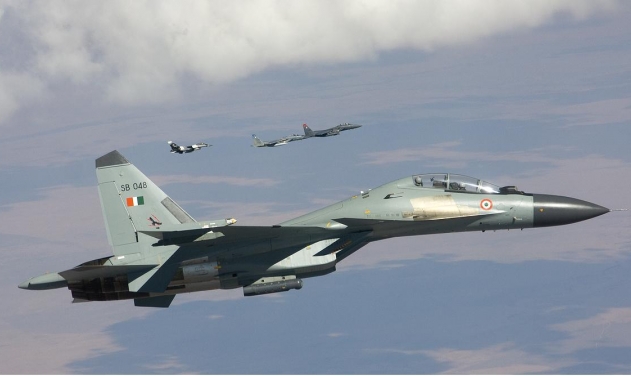 IAF Su-30MKI with Litening pod
IAF Su-30MKI with Litening pod
SURA-I HELMET-MOUNTED TARGET DESIGNATION AND INDICATION SYSTEM

The SURA-I Helmet-Mounted Target Designation and Indication System (HMTDIS) is the upgraded version of the production-run Sura HMTDS offering the new advantage: it displays aiming and flight information in the pilot’s field of view.
The HMTDIS receives signals from the airborne system and generates the indicative marks (symbols, alphanumeric information) displayed in the pilot’s field of view.
The type and volume of the displayed data will be specified with the Customer.
The data display field of view: 6×4°.The production-run Sura HMTDIS upgrade is fulfilled by changing a helmet unit and two boards in the electronic module.
SURA and SURA-I HMTDS
COMPARATIVE CHARACTERISTIC
Helmet-mounted target designation system (HMTDS) with indication (SURA-I) was developed as a modernization and improvement project of SURA HMTDS in order to increase HMTDS application efficiency in close air combat modes.
During development the data exchange protocol between HMTDS and RIF complex of Su-30MKI aircraft, HMTDS airborne units connection circuits were kept. Also the SURA HMTDS combat application identity was provided so there is no need to change the flight personnel training program.
Modernization consists in:
– improvement of helmet unit (liquid crystal matrix is used as image forming element);
– replacement of CPU and electronic block check unit.
SURA-I HMTDS order code example: «СУРА АЖИЮ.201219.002-001»
SURA-I HMTDS is designed for:
1. Determination of angular coordinates (in azimuth (У) and elevation angle (Z)) of sighting
line of visually observed object.
2. Operational aiming of guided weapons (guided missiles, cannon turrets) and surveillance
systems to visible objects by turn of the pilot’s head without changing aircraft course in aircraft
coordinate system.
3. Forming and indication of single commands and flight & navigation indication in pilot’s FOV.
SURA-I HMTDS has 5-level noise immunity degree implemented, outer parameters failures are eliminated.
Source vayu-sena.tripod.com
The aircraft is fitted with a satellite navigation system (A-737 GPS compatible), which permits it to make flights in all weather, day and night. The navigation complex includes the high accuracy SAGEM Sigma-95 integrated global positioning system and ring laser gyroscope inertial navigation system. Source aviationfighters.blogspot.com
SIGMA 95 laser gyro navigation systems

Indian aerospace giant Hindustan Aeronautics Ltd (HAL) has signed a technology transfer agreement with Sagem (Safran) concerning the manufacture and maintenance in India of Sagem’s SIGMA 95 laser gyro navigation systems.
Developed by Sagem for fixed and rotary-wing combat aircraft, the SIGMA 95 is an autonomous, hybrid laser gyro inertial/GPS-Glonass* navigation system. It stands up to severe environments, and gives military aircraft a high degree of navigation precision and operational flexibility, thus supporting the success of even the most demanding missions, including in areas without GPS signals.
According to the terms of this agreement, HAL will be able to produce SIGMA 95 units for the Indian air force, and also provide “level 3” front line maintenance. Source safran-group.com
APK-9 datalink pod for the Kh-59M
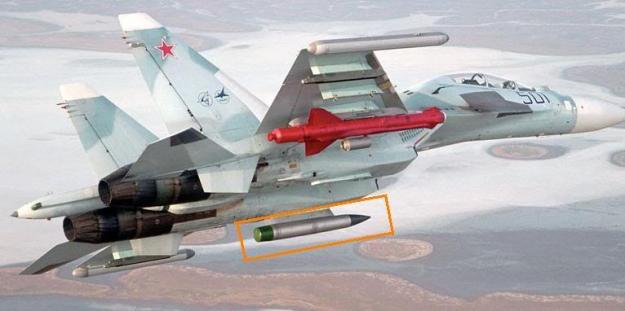 Kh-59ME Ovod M / AS-18 Kazoo and APK-9 Tekon pod on Su-30MK (KnAAPO image). – Image: ausairpower.net
Kh-59ME Ovod M / AS-18 Kazoo and APK-9 Tekon pod on Su-30MK (KnAAPO image). – Image: ausairpower.net APK-9 Tekon pod –Image: ausairpower.net
APK-9 Tekon pod –Image: ausairpower.net
Kh-59M missile

The Kh-59 Ovod (Russian: Х-59 Овод ‘Gadfly’; AS-13 ‘Kingbolt’) is a Russian TV-guided cruise missile with a two-stage solid-fuel propulsion system and 200 km range. The Kh-59M Ovod-M (AS-18 ‘Kazoo’) is a variant with a bigger warhead and turbojet engine. It is primarily a land-attack missile but the Kh-59MK variant targets shipping.

The original Kh-59 is propelled by a solid fuel engine, and incorporates a solid fuel accelerator in the tail. The folding stabilizers are located in the front of the missile, with wings and rudder in the rear. The Kh-59 cruises at an altitude of about 7 meters above water or 100–1,000 metres (330–3,280 ft) above ground with the help of a radar altimeter. It can be launched at speeds of 600 to 1,000 km/h (370 to 620 mph) at altitudes of 0.2 to 11 kilometres (660 to 36,090 ft) and has a CEP of 2 to 3 meters. It is carried on an AKU-58-1 launch pylon.
The Kh-59ME has an external turbofan engine below the body just forward of the rear wings, but retains the powder-fuel accelerator. It also has a dual guidance system consisting of an inertial guidance system to guide it into the target area and a television system to guide it to the target itself.
The 36MT turbofan engine developed for the Kh-59M class of missiles is manufactured by NPO Saturn of Russia.
36MT turbofan engine
Design features
- 1-stage fan
- axial-diagonal high pressure compressor
- annular combustor
- 1-stage high pressure turbine
- 1-stage low pressure turbine
Specification
|
Engine |
36МТ |
|
Thrust at maximum rating, kgf |
450 |
|
Maximum length, mm |
850 |
|
Maximum diameter, mm |
330 |
|
Weight, kg |
<100 |
Source npo-saturn.ru
Target coordinates are fed into the missile before launch, and the initial flight phase is conducted under inertial guidance. At a distance of 10 km from the target the television guidance system is activated. An operator aboard the aircraft visually identifies the target and locks the missile onto it.
|
Specifications |
|
|
Weight |
930 kg (2,050 lb) |
|
Length |
570 cm (220 in) |
|
Diameter |
38.0 cm (15.0 in) |
|
Warhead |
Cluster or shaped-charge fragmentatio |
|
Warhead weight |
320 kg (705 lb) |
|
Engine |
Kh-59: two-stage rocket Kh-59ME: rocket then turbofan |
|
Wingspan |
130 cm (51.2 in) |
|
Operational range |
Kh-59ME (export): 115 km (62 nmi) Kh-59ME: 200 km (110 nmi) Kh-59MK: 285 km (150 nmi) |
|
Speed |
Mach 0.72-0.88 |
|
Guidance system |
inertial guidance (then TV guidance), millimeter wave active radar seeker (Kh-59MK, Kh-59MK2 land attack version) |
|
Launch platform |
Kh-59ME: Su-30MK Kh-59: Su-24M, MiG-27, Su-17M3/22M4, HAL Tejas, Su-25 and Su-30 |
Source wikipedia.org
К-36D-3,5 (К-36D-3,5М) Ejection seat
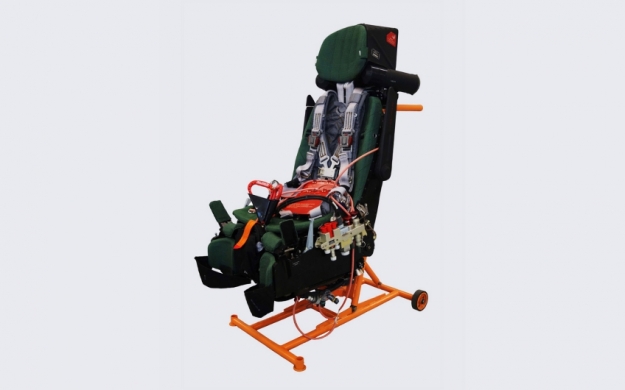
Design description:
In flight, a crewmember is held in the seat with a suspension/restraint harness system. The crewmember may be restrained in the seat with the shoulder and waist restraint mechanisms. The seat features stepless height adjustment, which makes the seat occupation comfortable for work and vision.
The crewmember protection against the dynamic pressure G-loads at ejection is provided with the protective gear, windblast shield, forced restraint in the seat, seat stabilization as well as the selection of one of three operation modes for the energy source depending on the suited pilot mass. At the aircraft speed exceeding 850 km/h, the MRM steady-state mode is adjusted by the automatics depending on the acceleration.
After automatic separation of the pilot from the seat, the recovery parachute canopy is inflated providing the pilot’s safe descent. A portable survival kit, which is separated from the seat together with the pilot, supports his/her vital functions after landing or water landing, makes the pilot search easier, and the ПСН-1 life raft supports the pilot floatation on the surface of water.
Specifications:
The К-36D-3,5 ejection seat realizes the crewmember emergency escape within the range of equivalent airspeed (VE.) from 0 to 1300 km/h, at Mach number up to 2.5 and aircraft flight altitude from 0 to 20,000 m, including takeoff, landing run and «Н=0, V=0» mode. The seat is used with the KKO-15 set of protective gear and oxygen equipment.
The seat installation mass does not exceed 103 kg, including the survival kit.
Year of development: 2001
Application:
The К-36D-3,5 family features seat modifications for each aircraft version.
The К-36D-3,5 seats are installed in all versions of the Su-30 aircraft; the К-36D-3,5M seats are installed in the MiG-29M and seaborne МiG-29К/KUB aircraft.
Source zvezda-npp.ru
Oxygen System KS – 129
Purpose:
The KS -129 oxygen system is designed to provide one or two pilots of the front-line aircraft with oxygen during flights at the altitudes up to 20 km. (KS -130 oxygen system is used at the altitudes up to 12 km). The oxygen source is the BKDU -130 onboard oxygen-generating system, which produces oxygen from compressed air tapped from the aircraft gas turbine compressor.
Major advantages of the bottle-free oxygen system:
- There are no onboard oxygen bottles in the system and, correspondingly, there is no need in pre-flight charging of the system with oxygen;
- The mission duration is not limited with the onboard oxygen reserve;
- The system features less line maintenance man-hours than the system with the bottle oxygen source.
The KS-129 oxygen system is used onboard the MiG-29K (KUB), MiG-29UPG, MiG-35, Su-30МКМ, Su-30МКI(A), Su-35, etc. Source zvezda-npp.ru
Weapon systems and countermeasures
The Su-30MKI is armed with a 30mm Gsh-30-1 cannon with 150 rounds of ammunition. The aircraft features 12 hardpoints capable of carrying external stores of up to 8t. The aircraft can launch a range of air-to-surface missiles, including Kh-29L/T/TYe, Kh-31A/P, Kh-59M and Nirbhay.
GSh-301 30mm cannon

The Gryazev-Shipunov GSh-30 (ГШ-30) is a family of autocannons used on certain Russian military aircraft.
The GSh-30-1 (also known as “GSh-301”) is the standard cannon armament of most modern Russian fighters including the Yak-141 Freestyle, MiG-29 Fulcrum, Su-27 Flanker and its’ various derivatives. The GSh-30-2 is carried by the Sukhoi Su-25 Frogfoot ground attack plane and in external gun pods. The GSh-30-2K is a modified version with 2400mm long water-cooled barrels and variable rate of fire. It is used on a fixed mounting on Mi-24P Hind-F helicopters.
Gryazev-Shipunov GSh-30-1
- Caliber: 30x165mm
- Operaton: Gast principle
- Length: 1978mm
- Weight (complete): 46 kg
- Rate of fire: 1500–1800 rpm
- Muzzle velocity: 860 m/s
- Projectile weight: 386-404 g (13.6-14.25 oz)
- Mounting platforms: Yakovlev Yak-141 “Freestyle”, Mikoyan MiG-29 “Fulcrum”, Sukhoi Su-27 “Flanker” (and derivatives), Sukhoi Su-34 “Fullback”
GSh-30 Data imfdb.org
New-generation anti-radiation missile (NGARM)
The Su-30MKI fleet of IAF will be fitted with air-launched version of BrahMos supersonic cruise missiles. The BrahMos can strike targets within the range of 290km.
BrahMos supersonic cruise missile

The BRAHMOS is a short-range supersonic cruise missile, that can carry nuclear warhead. It was jointly developed by India and Russia. The BRAHMOS Aerospace joint venture was established in 1998 and started working on the project. The acronym BRAHMOS is an abbreviation of two rivers, the Brahmaputra of India and Moskva of Russia. The missile was first test fired in 2001.
The BRAHMOS entered service with the Indian armed forces in 2006. This missile has been adopted by Indian Army, Navy and Air Force. Some sources report that Indian armed forces have a total requirement for about 1 000 of these missiles. This cruise missile is also being proposed for export customers from 14 countries.
The BRAHMOS is based on the Russian P-800 Oniks supersonic anti-ship cruise missile. The missile is 9 m long and has a diameter of 0.7 m. It has a two-stage propulsion system. It uses solid-fuel rocket booster for initial acceleration and liquid-fuel ramjet for sustained supersonic cruise. The booster is ejected by the airflow after it has burned out.
This missile has a range of 290-300 km. It can carry nuclear warhead, or 200-300 kg conventional warhead. The range is limited to 300 km, as Russia is a signatory of the Missile Technology Control Regime, which prohibits it from helping other countries develop missiles with ranges above 300 km.
The BRAHMOS is one of the fastest cruise missiles in the world. It travels at supersonic speed and can gain a speed of Mach 2.8 (3 430 km/h). This missile was developed primarily as an anti-ship missile, however there are also land attack versions. This cruise missile has GPS/GLONASS/GAGAN satellite guidance. It uses US, Russian or Indian navigation satellites and has a pin-point accuracy. At a maximum range it can hit a target as small as 1.5 x 1.5 m. It is a fire-and-forget type missile.

| General data: | |
|---|---|
| Type: Guided Weapon | Weight: 3000 kg |
| Length: 8.9 m | Span: 1.4 m |
| Diameter: 0.72 | Generation: None |
| Properties: Home On Jam (HOJ), Terrain Following, Search Pattern, Bearing-Only Launch (BOL), Weapon – INS Navigation, Terminal Maneuver – Zig-zag, Level Cruise Flight |
| Targets: Surface Vessel |
| Sensors / EW: |
|---|
| Active Radar Seeker – (ASM MR, AS-21, SS-N-26) Radar Weapon Seeker, Active Radar Max Range: 9.3 km |
| Passive Radar Seeker – (AS-21, SS-N-26) ESM Weapon Seeker, Anti-Radiation Max Range: 18.5 km |
| Weapons: |
|---|
| PJ-10 Brahmos – (2012, Yakhont, ASM) Guided Weapon Surface Max: 296.3 km. |
Source cmano-db.com
India to conduct Test-Fire BrahMos supersonic missile’s air version in June: Here
IAF’s Su-30 MKI test-flown with BrahMos missile system: 5 reasons why it’s important for India’s defence capability: Here
 With Today’s Successful Flight, The BrahMos Air Version Programme Now Inches Closer Towards Actual Test Firing, When A 2.5-Ton Brahmos Air-To-Ground Missile Will Be Fired From The Sukhoi-30 In The Coming Months. Posted June 25, 2016 by Source: financialexpress.com
With Today’s Successful Flight, The BrahMos Air Version Programme Now Inches Closer Towards Actual Test Firing, When A 2.5-Ton Brahmos Air-To-Ground Missile Will Be Fired From The Sukhoi-30 In The Coming Months. Posted June 25, 2016 by Source: financialexpress.com
Su-30MKI will be able to carry BrahMos NG in a three-missile load-out by 2021: Here

India fires world’s fastest supersonic cruise missile from Russian Su-30 fighter jet: Here
Excerpt
India has for the first time fired a BrahMos missile from a Sukhoi Su-30 plane, with the country’s Defense Ministry claiming the air-launch a success. The missile’s developer said it “can be a game changer for any air force in the world.”
The aircraft can also carry Vympel-built R-27R, R-73 and R-77 air-to-air missiles, as well as rocket pods, KAB-500 and KAB-1500 laser-guided bombs.
R-27 (NATO reporting name: AA-10 Alamo)

Medium-range missiles R-27 (e), designed to intercept and destroy aircraft and helicopters of all types of unmanned aerial vehicles and cruise missiles in a dogfight at medium and long distances, with individual and group actions carrier aircraft, day and night, in simple and adverse weather conditions, from any direction, against the background of the earth and the sea, with active information, firing and maneuvering countering enemy.
 27R SARH air-to-air missiles – Image: digitalcombatsimulator.com
27R SARH air-to-air missiles – Image: digitalcombatsimulator.com
Available in several versions, differing use of two types of homing – semi-active radar (PARGS) and heat – and two types of propulsion systems – with standard and increased installed power. Modifications PARGS are designated R-27R and R-27ER, with TGS – R-27T, R-27ET, with propulsion of increased energy available – R-27ER and R-27ET.
Main material rocket design titanium alloy, a steel motor housing .
For the suspension to the carrier aircraft and launch weight of both modifications missiles used the same launchers rail and catapult type.
 R-27ET IR air-to-air missiles extended range – Image: digitalcombatsimulator.com
R-27ET IR air-to-air missiles extended range – Image: digitalcombatsimulator.com
The rail trigger APU-470 is used for the deployment of missiles under the wings of the aircraft, and the ejection device AKU-470 for the deployment of missiles under the fuselage and under the wings.
 Image: artem.ua
Image: artem.ua Image: artem.ua
Image: artem.ua
Data airwar.ru & artem.ua
Vympel R-73 (NATO reporting name: AA-11 Archer)
 Image: digitalcombatsimulator.com
Image: digitalcombatsimulator.com
R-73A

Currently the R-73 is the best Russian short range air-to-air missile. Apart from an exceptional maneverability, this missile is also directly connected to the pilot’s helmet, which allows engagement of targets lateral to the aircraft, which cannot be engaged by missiles with a traditional system of targeting and guidance. The R-73A, an earlier variant of this missile, has a 30 km range, while the most recent R-73M can hit targets at a distance of 40 km.
R-73M

The R-73 short-range, close-combat standardized missile was developed in the Vympel Machine Building Design Bureau, and became operational in 1984. The R-73 is included in the weapon complex of MiG-23MLD, MiG-29 and Su-27 fighters and their modifications and also of Mi-24, Mi-28 and Ka-50 helicopters. It also can be employed in flying craft which do not have sophisticated aiming systems.

The missile is used for engaging modern and future fighters, attack aircraft, bombers, helicopters, drones and cruise missiles, including those executing a maneuver with a g-force up to 12. It permits the platform to intercept a target from any direction, under any weather conditions, day or night, in the presence of natural interference and deliberate jamming. It realizes the “fire and forget” principle.

The missile design features a canard aerodynamic configuration: control surfaces are positioned ahead of the wing at a distance from the center of mass. The airframe consists of modular compartments accommodating the homing head, aerodynamic control surface drive system, autopilot, proximity fuze, warhead, engine, gas-dynamic control system and aileron drive system. The lifting surfaces have a small aspect ratio. Strakes are mounted ahead of the aerodynamic control surfaces.

The combined aero-gas-dynamic control gives the R-73 highly maneuverable flight characteristics. During flight, yaw and pitch are controlled by four aerodynamic control surfaces connected in pairs and by just as many gas-dynamic spoilers (fins) installed at the nozzle end of the engine. Control with engine not operating is provided by aerodynamic control surfaces. Roll stabilization of the missile is maintained with the help of four mechanically interconnected ailerons mounted on the wings. Drives of all missile controls are gas, powered from a solid-propellant gas generator.

The passive infrared homing head supports target lock-on before launch. Guidance to the predicted position is by the proportional navigation method. The missile’s combat equipment consists of an active proximity (radar or laser) fuze and impact fuze and a continuous-rod warhead.
The engine operates on high-impulse solid propellant and has a high-tensile steel case. Russia’s Vympel weapons designers have developed a one-of-a-kind air-to-air missile, which NATO has dubbed as AA-11, for use on foreign fighter planes. Techically and militarily the new missile, meant for quick-action dogfights, leave its foreign analogues far behind. Vympel experts have also made it possible for the new missile to be easily installed on all available types of aircraft. The AA-11 can also be used on older planes which will now be able to effectively handle the US’ highly maneuverable F-15 and F-16 jets. The AA-11 missile is based on all-new components, use new high-energy solid fuel and an advanced guidance and control system which has made it possible to minimize their size. Their exceptionally high accuracy is ensured by the missile’s main secret, the so-called transverse control engine, which rules out misses during the final approach trajectory. The transverse control engine is still without parallel in the world.

Russia has offered the export-version R-7EE air-to-air missile system for sale so that it can be fitted to foreign-made fighter aircraft. Developed by the Vympel state-sector engineering and design bureau, the R-7EE is designed for close-quarters aerial combat. Vympel specialists have developed a way of ensuring that the missile system can be fitted to virtually any type of aircraft. It can be fitted to older aircraft, which feature heavily in third-world countries’ air forces.
| Contractor | Vympel |
| Date Deployed | 1980s |
| Range | 20 km (R-73M1) 30 km (R-73M2) 40 km |
| Speed | Mach 2.5 |
| Propulsion | One solid-propellant rocket motor |
| Guidance | All aspect Infrared |
| Warhead | 7.4 kg HE expanding rod warhead |
| Launch Weight | 105 kg (R-73M1) 115 kg (R-73M2) |
| Length | 2.9 m |
| Diameter | 170 mm |
| Fin Span | 0.51 m |
| Platforms | Su-27, Su-33, Su-34, Su-35, Su-37, MiG-29, MiG-31, MiG-33, Yak-141, Ka-50, Ka-52 |
Data fas.org Images sourced from the net
R-77
The R-77, RVV-AE designation used for the export market and AA-12 Adder designation used by Western intelligence, is an extended medium range air-to-air missile featuring an active radar seeker to engage multiple airborne targets simultaneously. This missile was designed as the Soviet/Russian counterpart to the United States Air Force AIM-120 AMRAAM. The R-77 enables the Mig-29 and Su-27 fighter aircraft families to engage multiple airborne threats simultaneously thanks to its fire and forget capability. There are other versions fitted with infrared and passive radar seekers instead of active radar homing. Future plans call for increasing the missile range well beyond 150 kilometers.
The R-77 has been designed with innovative control surfaces which are one of the keys of its impressive performance. Once launched, the R-77 depends on an inertial navigation system with optional in-flight target position updates from the aircraft sensors. When the R-77 missile is at a distance of about 20 km its radar homing head activates leading the missile to its target.
Dimensions
Diameter: 200 millimeter
Length: 3.60 meter (11.8 foot)
Wingspan: 350 millimeter
Performance
Max Range: 80 kilometer (43 nautical mile)
Target’s Max Altitude: 25,000 meter
Target’s Min Altitude: 20 meter
Speed
Top Speed: 4 mach (4,782 kph)
Weight
Warhead: 30 kilogram
Weight: 175 kilogram (386 pound)
R-77 data deagel.com
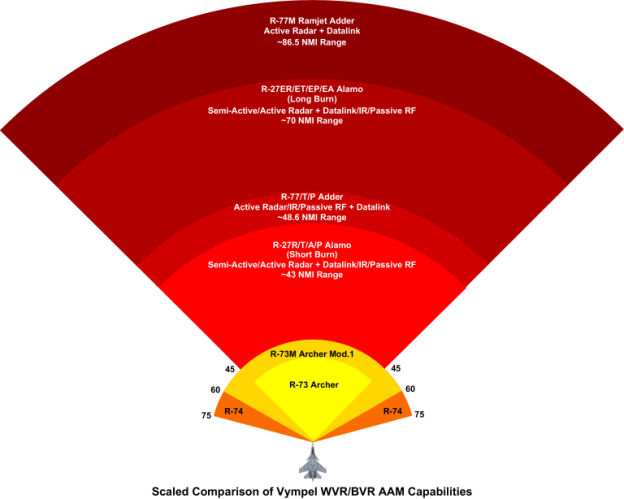 Image: ausairpower.net
Image: ausairpower.net
Kh-31P & Kh-31A

The Kh-31, AS-17 Krypton NATO-codename, is an advanced, long range, highly supersonic missile designed to withstand countermeasures effects. The Kh-31 propulsion system consists of a solid-fuel rocket engine which accelerates the missile to Mach 1.8 airspeed. Then this engine is dropped and a jet engine ignites using the missile’s within space as a combustion chamber. The missile accelerates to Mach 3+ thanks to the jet engine.

The Kh-31P has been designed to be a high performance anti-radiation missile against the most sophisticated air defense systems developed by NATO countries. It features high kill probability against radar systems that have been turned-off when attacked.
Number of Stages: 2
Dimensions
Diameter: 360 millimeter
Length: 4.70 meter
Wingspan: 780 millimeter
Performance
Max Range: 110 kilometer
Min Range: 15 kilometer
Speed
Top Speed: 3 mach (3,587 kph)
Weight
Warhead: 87 kilogram
Weight: 600 kilogram
Source Kh-31P deagel.com
Kh-31A
The Kh-31A is an anti-ship missile based on the proven Kh-31P missile. It features an active radar guidance system and a sea-skimming profile.
Number of Stages: 2
Dimensions
Diameter: 360 millimeter
Length: 4.70 meter (15.4 foot)
Wingspan: 780 millimeter
Performance
Max Range: 70 kilometer (37.8 nautical mile)
Min Range: 7.50 kilometer
Speed
Top Speed: 1,000 mps (3,601 kph)
Weight
Warhead: 94 kilogram (207 pound)
Weight: 610 kilogram
Source Kh-31A deagel.com
 Image: ausairpower.net
Image: ausairpower.net
Novator RVV-L / R-172 / K-100
The R-172, previously designated the KS-172, is a departure from the established focus of Novator, designers of the S-300V (SA-12) system’s long range SAMs. Like the R-37, the R-172 was developed as an ‘AWACS killer’. The missile employs an active radar seeker and inertial midcourse guidance. Two configurations are known, with and without a booster pack. With the booster the missile is claimed to achieve a range of 215 NMI, without 160 NMI. Cited seeker performance is similar to the R-37.
While the R-172 is less mature than the R-37, India has recently negotiated an arrangement to fund final development and licence produce the weapon, not unlike the extant deal to licence the Yakhont as the BrahMos. Source ausairpower.net
 Image: ausairpower.net
Image: ausairpower.net
| Specifications | |
| Weight | 748 kg (1,650 lb) (KS–172) |
| Length | 6.01 m (19.7 ft) + 1.4 m (4.6 ft) (KS–172) |
| Diameter | 40 cm (16 in) (KS–172) |
| Warhead | HE fragmentation (KS–172) |
| Warhead weight | 50 kg (110 lb) |
| Engine | Solid-propellant tandem rocket booster (KS–172) |
| Wingspan | 61 cm (24 in) (KS–172) |
| Operational range |
At least 200 km, possibly 300–400 km (160–210 nmi) |
| Flight altitude | 3 m (9.8 ft)–30,000 m (98,000 ft) (KS–172) |
| Speed | 4,000 km/h (2,500 mph; 1.1 km/s; Mach 3.3) (KS–172) |
| Guidance system |
inertial navigation with midcourse guidance and terminal active radar homing (KS–172) |
| Launch platform |
Su-27, Su-30, Su-35, Su-30MK, PAK FA (expected) |
Specification wikiwand.com
Kh-29T(TE)
The Vympel Kh-29 / AS-14 Kedge is a Russian supersonic equivalent to the French AS.30 and US AGM-65 Maverick, and is primarily intended for interdiction and close air support, maritime strike roles, and attacks on hardened concrete shelters and structures. An APU-58 or AKU-58 launcher is used, on the Su-27/30 Flanker (up to 6 rounds), the MiG-27 Flogger (2 rounds), Su-17/22 Fitter (2 rounds) and Su-24M Fencer (3 round). Multiple variants exist.

The Kh-29T (Izdeliye 64 or AS-14B) is an electro-optical variant with a daylitgh television seeker. The Kh-29TE is the export variant, the Kh-29TM an enhanced variant. The Kh-29TD is another EO variant, possibly equipped with a thermal imaging seeker.
Kh-29T
Missile weight: 680 kg
Length: 3900 mm
Diameter: 400 mm
Wingspan: 1100 mm
Minimum range*: 3 km
Maximum range: 8 – 12 km
Engine: fixed thrust solid, fuel rocket
Fuze type: impact
Guidance system: passive TV
Warhead: high-explosive penetrating
Warhead weight: 320 kg
Kh-29TE
Missile weight: 690 kg
Length: 3900 mm
Diameter: 400 mm
Wingspan: 1100 mm
Minimum range*: 3 km
Maximum range: 20 – 30 km
Engine: fixed thrust, solid fuel rocket
Fuze type: impact
Guidance system: passive TV
Warhead: high-explosive penetrating
Warhead weight: 320 kg
Source armamentresearch.com
Kh-29L

The Kh-29L (Izdeliye 63 or AS-14A) is a semi-active laser homing variant used in the manner of the AS.30L, with a 24N1 seeker. Source ausairpower.net
Kh-29L
Missile weight: 660 kg
Length: 3900 mm
Diameter: 400 mm
Wingspan: 1100 mm
Minimum range*: 3 km
Maximum range: 8 – 10 km
Height of launch: 0.2 – 5 km
Engine: fixed thrust, solid fuel rocket
Fuze type: impact
Guidance system: passive TV
Warhead: high-explosive penetrating
Warhead weight: 320 kg
Source armamentresearch.com
KAB-500KR, KAB-500 OD
KAB-500Kr, KAB-500-OD are guided and corrected air bombs
The KAB-500Kr corrected air bomb is designed to engage stationary ground/surface small-sized hardened targets, such as reinforced concrete shelters, runways, railway and highway bridges, military industrial installations, warships, and transport vessels.
The KAB-500-OD corrected air bomb is designed to engage ground targets, such as fire emplacements, and manpower hidden in mountainous terrains.
The KAB-500Kr, KAB-500-OD corrected air bombs are fitted with TV/terrain-matching homing heads and various types of warheads. TV homers with target data processing correlation algorithm can “remember” target location and correct bomb’s flight trajectory until the impact on the target, thus realizing the “fire and forget” principle. Such homing heads can help defeat low-contrast and masked targets provided that terrain reference points and target coordinates related to them are available. The KAB-500Kr, KAB-500-OD corrected air bombs make part of weapon systems of such front-line aircraft types as Su-27, Su-30, Su-34, Su24M, MIG-29 and others.

Developer and manufacturer: State Research and Production Enterprise “Region”
Performance:
| KAB-500Kr | KAB-500-OD | |
| Weights: total/warhead/HE, kg | 520/380/100 | 370/250/140 |
| Dimensions: | ||
| length, m | 3,05 | 3,05 |
| diameter, m | 0,35 | 0,35 |
| empennage, m | 0,75 | 0,75 |
| Bomb drop altitude, km | 0,5-5 | 0,5-5 |
| Carrier speed, km/h | 550…1100 | 550-1100 |
| Root mean square deviation, m | 4…7 | 4…7 |
| Warhead type | concrete-piercing | high explosive |
| (high explosive | (fuel-air | |
| penetrator) | explosive) |
Source ktrv.ru
 KAB-500Kr, KAB-500-OD – Image: justpaste.it
KAB-500Kr, KAB-500-OD – Image: justpaste.it
KAB-1500KR
KAB-1500Kr are guided and corrected air bombs
The KAB-1500Kr corrected air bomb is designed to engage various stationary ground/surface small-sized hardened targets, such as reinforced concrete shelters, military industrial installations, depots, and seaport terminals.
The KAB-1500Kr corrected air bombs are fitted with TV/terrain-matching homing heads and various types of warheads. TV homers with target data processing correlation algorithm can “remember” target location and correct bomb’s flight trajectory until the impact on the target, thus realizing the “fire and forget” principle. Such homing heads can help defeat low-contrast and masked targets provided that terrain reference points and target coordinates related to them are available. The KAB-1500Kr corrected air bombs make part of weapon systems of such front-line aircraft types as Su-27, Su-30, Su-34, Su24M, MIG-29 and others.

Developer and manufacturer: State Research and Production Enterprise “Region”
Performance:
| KAB-1500Kr | |
| Weights: total/warhead/HE, kg | 1,525/1,170/440 |
| Dimensions: | |
| length, m | 4,63 |
| diameter, m | 0,58 |
| empennage, m | 0,85 (folded) |
| 1,3 unfolded | |
| Bomb drop altitude, km | 1-8 |
| Carrier speed, km/h | 550-1100 |
| Root mean square deviation, m | 4…7 |
| Warhead type | high explosive |
Source ktrv.ru

KAB-1500L
The KAB-1500L, KAB-1500LG-F-E is the current production standard, is a 1,500 kg, laser-guided bomb designed to hit stationary ground and surface targets when used by the latest generation of Russian-made fighters and bombers. It is the Russian counterpart to United States Paveway II/III laser-guided bombs. Once released, the pilot or a third party must aim at the target with a laser designator in order to successfully direct the KAB bomb. The KAB-1500LG-F-E features an impact fuze with three delay modes.
The KAB-1500L bombs were deployed successfully during the Russian military campaign in Chechnya. Usually, the Su-24 Fencer and Mig-27 Flogger aircraft use this type of weapon in strike missions but can be used by the latest generation of Su-30MK multirole aircraft. The spectrum of targets to hit by this weapon include: railway and highway bridges, military and industrial facilities, ships and transport vessels, ammunition depots and railway terminals. Source deagel.com

Developer and manufacturer: GNPP “Region”
Performance:
| KAB-1500LG-Pr-E | KAB-1500LG-F-E | KAB-1500LG-OD-E | |
| Weight, kg | |||
| (total/warhead/explosive) | 1525/1120/210 | 1525/1120/440 | 1450/1170/650 |
| Dimensions, m: | |||
| length | 4,28 | 4,28 | 4,24 |
| diameter | 0,58 | 0,58 | 0,58 |
| wingspan | 0,85 (retracted) | 0,85 (retracted) | 0,85 (retracted) |
| 1,3 (extended) | 1,3 (extended) | 1,3 (extended) | |
| Drop altitude, km | 1 to 8 | 1 to 8 | 1 to 10 |
| Aircraft drop speed, km/h | 550 to 1100 | 550 to 1100 | 550 to 1100 |
| Aiming accuracy, m | 4 to 7 | 4 to 7 | 4 to 7 |
| Warhead | penetrating | high explosive | full air explosive |
| Type of blasting device | contact with three | contact with three | direct action contact |
| types of delay | types of delay |
Source ktrv.ru
 Image: ausairpower.net
Image: ausairpower.net
Unguided Projectiles
‘S-8’ 80mm unguided rockets

The S-8 system is the main caliber weapon in the class of unguided aircraft rockets and can solve a variety of aircraft missions.
The rocket is provided with a solid propellant motor with a summary thrust pulse of 5,800 N.s and operating time of 0.7 s. Progressive methods for body shaping from ready-made rolled aluminum and unique engineering solutions in terms of separate elements aimed at reducing motor manufacturing labor consumption and costs are used in its construction.
The following types of S-8 rockets are operational today:
-
- S-8KOM with HEAT fragmentation warhead;
- S-8BM with concrete-piercing (penetrating) warhead;
- S-8-OM with illuminating warhead.
‘S-13’ type 122mm unguided aircraft rocket
The S-13 is a 122 mm calibre unguided rocket weapon developed by the Soviet Air Force for use by military aircraft. It remains in service with the Russian Air Force and some other countries.
S-13T: Tandem HEAT, range 1.1 – 4 km Combined penetration of 6 m of earth and 1 m of reinforced concrete. Velocity 500 m/s.
 S-13T
S-13T
S-13OF: The only 122mm rocket available, this large rocket packs a blast-fragmentation warhead with some serious wallop, dealing significant damage to soft targets and lightly armored vehicles, and can even destroy a main battle tank with a direct hit. With only 5 rockets per pod, accurate delivery is key.
 The S-13OF
The S-13OF
S-25 OFM-PU

The S-25 is a Russian air-to-ground rocket launched from aircraft. It is launched from the O-25 pod which can hold one rocket.
S-25-OFM for use against hardened targets
 Rockets S-8, S-13, S-25 – Image: digitalcombatsimulator.com
Rockets S-8, S-13, S-25 – Image: digitalcombatsimulator.com
Unguided/Dumb Bombs
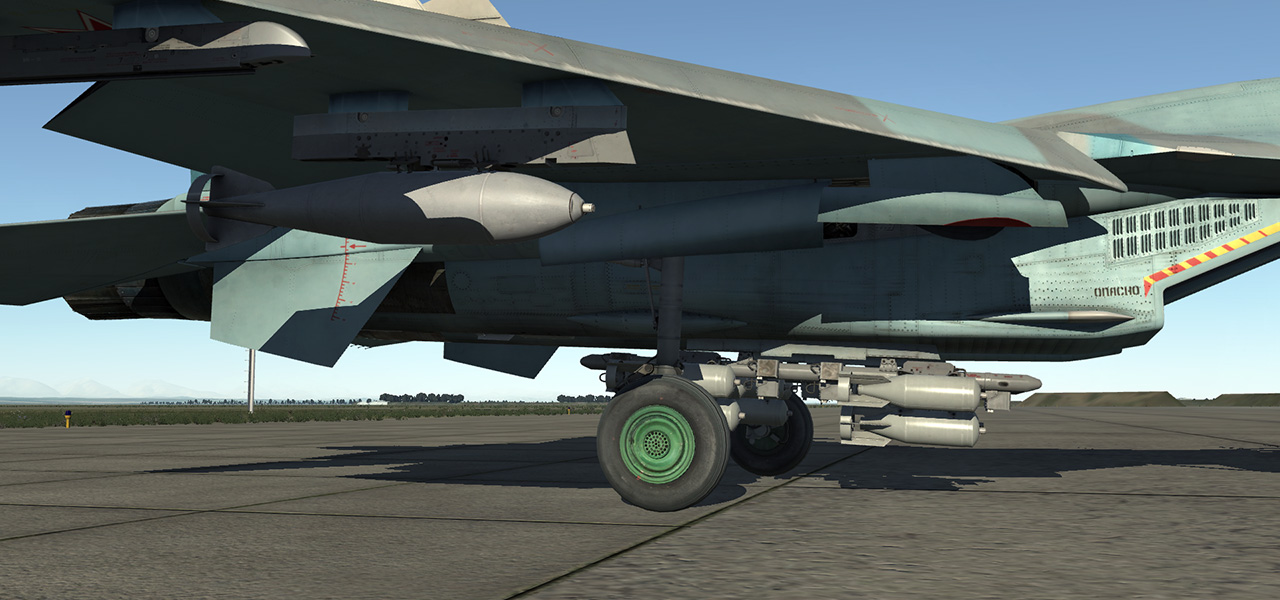 High explosive general purpose bombs FAB-500T – Image: digitalcombatsimulator.com
High explosive general purpose bombs FAB-500T – Image: digitalcombatsimulator.com Concrete piercing bombs BetAB-500 – Image: digitalcombatsimulator.com
Concrete piercing bombs BetAB-500 – Image: digitalcombatsimulator.com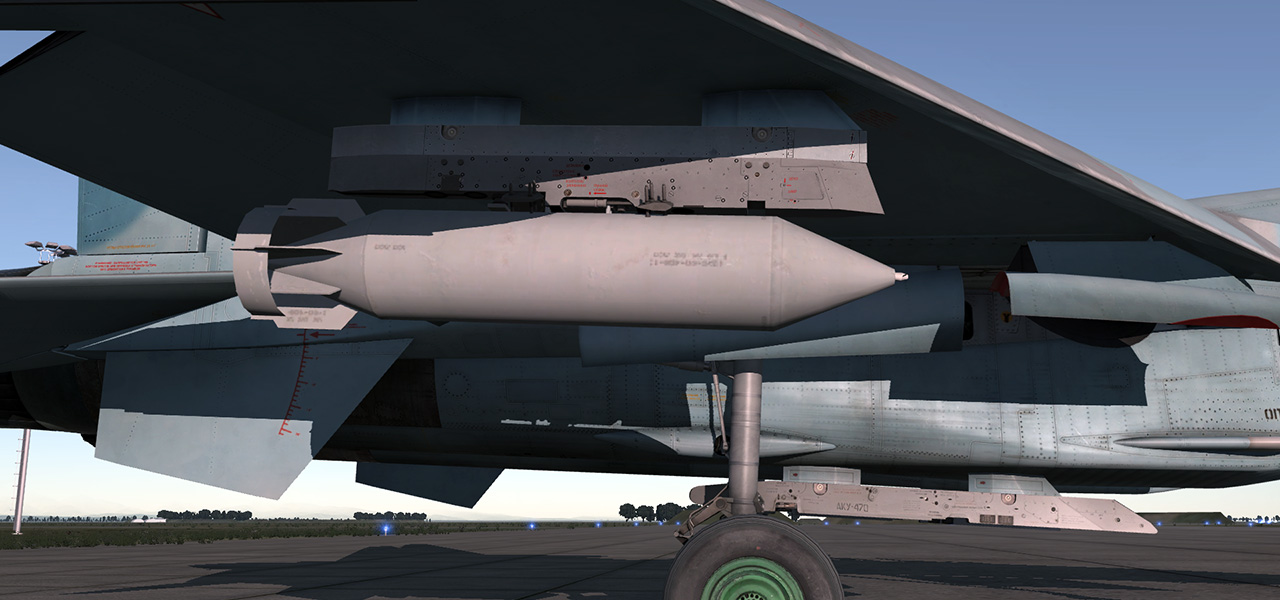 Cluster munitions RBK-500 – Image: digitalcombatsimulator.com
Cluster munitions RBK-500 – Image: digitalcombatsimulator.com
ODAB-500PM

Many Russian Air Force munitions also have thermobaric variants. The 80 mm (3.1 in) S-8 rocket has the S-8DM and S-8DF thermobaric variants. The S-8’s 122 mm (4.8 in) brother, the S-13, has the S-13D and S-13DF thermobaric variants. The S-13DF’s warhead weighs only 32 kg (71 lb), but its power is equivalent to 40 kg (88 lb) of TNT. The KAB-500-OD variant of the KAB-500KR has a 250 kg (550 lb) thermobaric warhead. The ODAB-500PM and ODAB-500PMV unguided bombs carry a 190 kg (420 lb) fuel-air explosive each. Source wikipedia.org
OFAB-100-120

OFAB 100-120. Fragmentation High Explosive Bomb 100-120 is intended for destruction of military field facilities and base stations, destruction of personnel in open terrain as well as in light armoured vehicles and trucks on the march or during attack within the main concentration perimeter.
TECHNICAL CHARACTERISTICS:
| Caliber, kg | 100 |
| Length, mm | 1 065 |
| Body Diameter, mm | ø273 |
| Tail fin span, mm | 345 |
| Characteristic time, s | 21,10/6 |
| Explosive weight, kg | 42 |
| Bomb weight, kg | 123 |
| Fuze | AVU-ETM;AVU-ET;AMV-AE2 |
Source dunarit.com
OFAB-250-270

OFAB 250-270. Fragmentation High Explosive Bomb 250-270 is intended for destruction of military-industrial sites, railway junctions, field facilities and personnel in open terrain as well as in light armoured vehicles and trucks on the march or during attack within the main concentration perimeter.
TECHNICAL CHARACTERISTICS:
| Caliber, kg | 250 |
| Length, mm | 1 456 |
| Body Diameter, mm | ø325 |
| Tail fin span, mm | 410 |
| Characteristic time, s | 20,92/12 |
| Explosive weight, kg | 92 |
| Bomb weight, kg | 268 |
| Distance between the two lugs, mm | 250 |
| Fuze | AVU-ETM;AVU-ET |
Source dunarit.com
P-50T

The P50-t air practice bomb is designed to train pilots (air crews) in round-the-clock bomb delivery.
![Sukhoi-Su-30-MKI-001[4].jpg](https://thaimilitaryandasianregion.files.wordpress.com/2016/08/sukhoi-su-30-mki-0014.jpg?w=625)
| Air-to-Air Missiles | Maximum Pcs |
| R-27R1 | 06 |
| R-27P | 02 |
| R-27T1 | 02 |
| R-73 | 06 |
| RVV-AE | 06 |
| Air-to-Surface Missiles | Maximum Pcs |
| Kh-59ME | 02 |
| Kh-31P, Kh-31A | 04 |
| Kh-29T(TE) | 06 |
| Kh-L | 06 |
| Guided/Smart Bombs | Maximum Pcs |
| KAB-500KR, KAB-500 OD | 06 |
| KAB-1500KR, KAB-1500L | 03 |
| Unguided Projectiles | Maximum Pcs |
| S-8KOM, S-80M, S-8MB | 04 blocks (80 pcs.) |
| S-13T, S-13OF | 04 blocks (20 pcs.) |
| S-25 OFM-PU | 04 |
| Unguided/Dumb Bombs | Maximum Pcs |
| FAB-500T | 08 |
| BETAB-500ShP | 08 |
| ODAB-500PM | 08 |
| OFAB-250-270 | 28 |
| OFAB-100-120 | 32 |
| P-50T | 32 |
| RBK-500 bomb clusters with PBE-D | 08 |
| Incendiary tanks | 3B-500 |
| Other | Maximum Pcs |
| APK-9 (Datalink Pod) | 01 |
| UPAZ-1 (IFR Pod) | 01 |
| Elta EL/L-8222 (RF Jammer) | 01(?) |
Weapons load data vayu-sena.tripod.com

The Su-30MKI is fitted with a tarang radar warning receiver (RWR) indigenously developed by the Defence Research and Development Organisation (DRDO). The aircraft also integrates chaff / flare dispensers and active jammers.
The RWR system is an indigenous product developed by DRDO called Tranquil (Tarang Mk2). Tarang is already deployed in IAF MiG-21 Bison and MiG-27ML fighters. Phase-I and Phase-II aircraft have SPO-32 (L-150) Pastel radar-warning receivers and no RF jammers. Latest aircraft are compatible with the Elta EL/M-8222 EW pod and so are the older Su-30MK/Ks.
Elta EL/M-8222 EW pod

Main Features
- Autonomous threat environment handling using an integrated ESM receiver: interception, analysis, identification, sorting and initiation of appropriate jamming techniques.
- Lightweight (100 Kg), low drag (19 cm. X 24 cm.) and small dimensions (length: 2.40 meter).
- The pod is also certified for installation on Air-to-Air missile (sidewinder equivalent) weapon stations.
- The Pod is certified to operate in full aircraft flight envelopes (G Loads and Velocities).
- Versatile fighter aircraft configurations of weapons and fuel tanks are available due to the flexible pod installation (weapon stations) options.
- Low Life Cycle Cost (LCC): Cost-effective, easy maintenance, high reliability and availability, minimal ILS requirements.
- Power-managed jamming regime in time, frequency and direction.
- Effective jamming capabilities: High RF sensitivity, High ERP and wide technique repertoire.
- Enhanced and user-friendly mission debriefing capabilities: all mission events and data are recorded and debriefed using PC-based replay equipment.
Source iai.co.il
DARE’s High Band Jammer (HBJ) pod
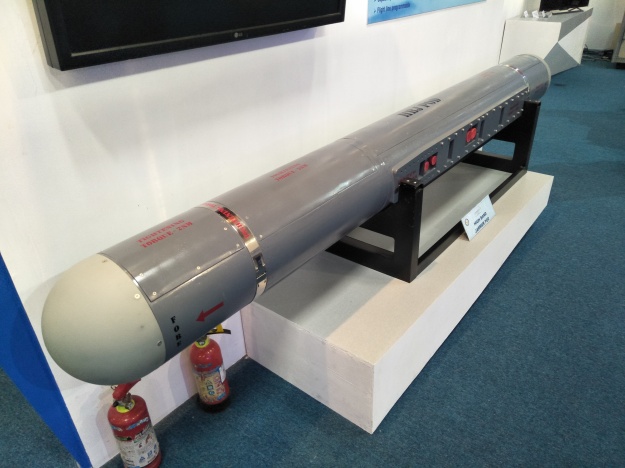 DARE’s High Band Jammer (HBJ) pod – Image: livefistdefence.com
DARE’s High Band Jammer (HBJ) pod – Image: livefistdefence.com
DARE’s High Band Jammer (HBJ) pod begins dummy carriage trials in six months on an IAF Su-30MKI, with full integration within the year. By 2019, DARE has committed to seeing the pod become fully operational with the IAF’s Flanker fleet.
Significantly, the HBJ pod will be a fully indigenous one. A DARE scientist explains that the HBJ pod currently has three major systems: the integrated EW suite, the active array phased transmit-receive unit and the cooling system. While the first two have been rapidly developed in-house, the complex cooling system is in process, with DARE sourcing an Israeli system for the moment. The team says they’ll have a fully functional Indian cooling system on the HBJ pod before full integration trials by the end of the year.
Better still, the HBJ pod, the scientists tell Livefist, will spawn a family of EW sensors and systems for platforms like the LCA Tejas, MiG-29 and any other fighter the IAF chooses to operate.
The Indian Air Force, which has embraced the wares from DARE more than kit from most other DRDO labs is expectedly thrilled. An IAF Su-30MKI pilot at the show confirmed that the HBJ pod was a ‘very promising system’ and that ‘more than anything, it is our own in-house development, so I don’t have to run to the Russians if something doesn’t work’.
A DARE scientist associated with the project tells a familiar story: Russia’s unwillingness to share codes (or its insistence on an additional commercial understanding) that could have helped manage the interfacing issues between the SAP-518 pod and Indian RWR better and faster. Source livefistdefence.com
SIVA IMR radar targetting pod
 SIVA targeting pod – Image: livefistdefence.com
SIVA targeting pod – Image: livefistdefence.com
In simple terms, the SIVA IMR pod is something similar to the ELTA Systems-developed ELM-2060P radar targetting pod, and it will be used for location of static ground targets/installations. The fact that the DRDO’s PJ-10 Project Office is the nodal agency for developing the IMR pod indicates that this pod will be used in conjunction with the BrahMos-NG (previously known as BrahMos-Mini) air-launched supersonic cruise missile.
 SIVA targeting pod – Image: livefistdefence.com
SIVA targeting pod – Image: livefistdefence.com
Systems integration and flight qualification of both the BrahMos-NG and SIVA IMR pod will be jointly undertaken by the Indian Air Force’s Bengaluru-based Aircraft & Systems Testing Establishment, HAL’s Nashik Division, BrahMos Aerospace and IRKUT Corp, which is the sole IPR owner of all operating software source-codes used by the Su-30MKI. Service-induction of this weapon system is not expected before 2020.
The existing SIVA HADF pods is used primarily for real-time detection and location of hostile ground-based air-defence radars, with the targetting cues then being uploaded into the Kh-3P anti-radiation missile’s on-board mission computer. This very same pod will in future also be used in conjunction with the DRDO-developed NG-ARM. Source trishul-trident.blogspot.com
Digital RWR

UPAZ-1 (IFR Pod)
 Image: ausairpower.net
Image: ausairpower.net Image: ausairpower.net
Image: ausairpower.net
Sukhoi Su-30MKI engine
 IAF Su-30MKI – Image: foxtrotalpha.jalopnik.com
IAF Su-30MKI – Image: foxtrotalpha.jalopnik.com
The Su-30MKI is powered by two Al-31FP turbojet engines. Each engine generates a full afterburn thrust of 12,500kgf. The power plant, equipped with thrust vector control, provides a maximum speed of Mach 1.9 in horizontal flight and a rate of climb of 300m/s.
Modernized Su-30MKI to be fitted with Su-35 Engines: Here
117S (AL-41F1S) turbofan engines
 Izdeliye (Product) 117S (AL-41F1S) turbofan engines thrust output is estimated at 142 kN (31,900 lbf)
Izdeliye (Product) 117S (AL-41F1S) turbofan engines thrust output is estimated at 142 kN (31,900 lbf)
On February 19, 2008 the Su-35 aircraft powered with 117S engines successfully performed its first test flight. The specified engine performances were proved during rigorous bench and flight tests. Russian Ministry of Defence is the launch customer for Su-35.
Advantages
The 117S engine thrust has been increased by 16% (up to 14500 kgf) compared to the base AL-31FP engine, the ultimate life has been increased twice (up to 4 000 hours), keeping the same weight and overall dimensions. Such high parameters are attained thanks to application of:
• new high-tech LP compressor with increased air consumption and efficiency
• high efficiency turbine with increased reliability and improved blade cooling system
• new digital engine control system integrated to aircraft flight control system
Specification (H=0, M=0, MCA)
| ENGINE | 117S |
|---|---|
| Maximum afterburning thrust, kgf | 14 500 |
| Combat mode thrust: • full afterburning thrust, kgf • maximum dry thrust, kgf |
14 000 8 800 |
| Ultimate service life, h | 4 000 |
Source npo-saturn.ru
Al-31FP turbojet engine
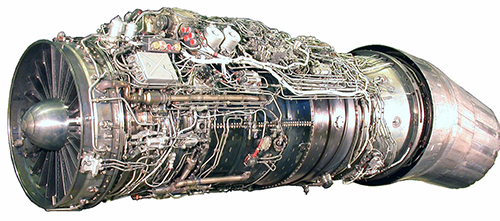 Image @hal-india.com
Image @hal-india.com
The Saturn AL-31 is a family of military turbofan engines. It was developed by Lyulka, now NPO Saturn, of Soviet Union, originally for the Sukhoi Su-27 air superiority fighter. It produces a total thrust of 123 kN (27,600 lb) with afterburning in the AL-31F, 137 kN (30,800 lb) in the AL-31FM (AL-35F) and 142 kN (32,000 lb) in the AL-37FU variants. Currently it powers all Su-27 derivatives and the Chengdu J-10 multirole jet fighter which has been developed in China.
The AL-31FP and AL-37FU variants have thrust vectoring. The former is used in the Su-30MKI export version of the Su-30 for India & Sukhoi Su-30MKM for Malaysia . The AL-37FU can deflect its nozzle to a maximum of ±15° at a rate of 30°/sec. The vectoring nozzle is utilized primarily in the pitch plane. The Al-31FP is built in India by HAL at the Koraput facility under a deep technology transfer agreement.

It has a reputation for having a tremendous tolerance to severely disturbed air flow. In the twin-engined Su-27, the engines are interchangeable between left and right. The Mean Time Between Overhaul (MTBO) for the AL-31F is given at 1000 hours with a full-life span of 3000 hours. Some reports suggested that Russia was offering AL-31F to Iran to re-engine its F-14 Tomcat air fleet in the late 1990s.
The Su-30MKI is powered by the Al-31FP (P for povorotnoye meaning “movable”), which is a development of the Al-37FU (seen in the Su-37 Terminator).
AL-31FP which is designed by the Lyulka Engine Design Bureau (NPO Saturn) is also different from Al-31F (by the same company). The Al-31F is the ‘baseline’ powerplant found in most Su-27 and its variants, and perhaps in the China’s J-10 in the future and lacks TVC. The AL-31FP was only 110Kg heavier and 0.4 m longer than the AL-31F, while the thrust remains the same. Planes equipped with AL-31F can be upgraded to AL-31FP later on without any changes in the airframe. It is being produced now at the Saturn manufacturing facility at Ufa, Russia.
The Al-37FU (FU stands for forsazh-upravlaemoye-sopo or “afterburning-articulating/steerable-nozzle”) basically added 2D Thrust Vectoring Control (TVC) Nozzles to the Al-31F. 2D TVC means that the Nozzles can be directed/pointed in 2 axis or directions – up or down. TVC obviuosly makes an aircraft much more maneuverable. Al-31FP builds on the Al-37FU with the capability to vector in 2 planes i.e. thrust can be directed side-ways also. The nozzles of the MKI are capable of deflecting 32 degrees in the horizontal plane and 15 degrees in the vertical plane. This is done by angling them inwards by 15 degrees inwards, which produces a cork-screw effect and thus enhancing the turning capability of the aircraft.
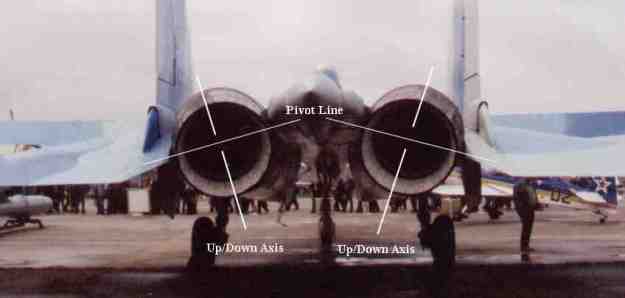 Image: vayu-sena-aux.tripod.com
Image: vayu-sena-aux.tripod.com
The TVC nozzles will be made of titanium to reduce the nozzle’s weight and can deflect together or differentially to achieve the desired thrust vector for a particular maneuver. The engine designers are also working to reduce the infrared signature for thrust settings below afterburner.
Also, the 2-nozzles can be vectored un-symmetrically, i.e. each nozzle can point at different directions independent from the other nozzle and thus multiplying the effect.The aircraft is capable of near-zero speed airspeed at high angles of attack and super dynamic aerobatics in negative speeds up to 200 km/h.
 Shows port nozzle of Su30MKI. its white! not black as many of us would expect! note long spine b/n nozzles – Image: aircraftresourcecenter.com
Shows port nozzle of Su30MKI. its white! not black as many of us would expect! note long spine b/n nozzles – Image: aircraftresourcecenter.com
TVC allows the MKI for example, to rapidly loose speed and turn in any direction and fire its weapons. The complete range of maneuveres possible in the MKI are impossible on any other combat fighter in production. “We even made a corkscrew spin a controllable manoeuvre – the pilot can leave it at any moment by a single motion of the stick that engages thrust-vectoring and aerodynamic surfaces,” says Sukhoi’s earlier general designer Mikhail Simonov.
Two AL-31FP by-pass thrust-vectoring turbojet reheated engines (25000 kgf full afterburning thrust) ensure a 2M horizontal flight speed (a 1350 km/h ground-level speed) and a rate of climb of 230 m/s. The Mean Time Between Overhaul (MTBO) for the AL-31FP is given at 1,000 hours with a full-life span of 3,000 hours. The titanium nozzle has a MTBO of 500 Hrs.
The Al-31FP improves upon the Al-37FU in two ways:
- Firstly, the Al-37FU cannot vector thrust in 2 planes unlike the Al-31FP.
- Secondly, the nozzle drive connection is effected now from the aircraft fuel system and not from the aircraft’s hydraulic system. The change-over to the fuel system, to control swiveling nozzles, enhances the dependability of the aircraft and its survivability in air combat.
 Shows the interoir of the Al31F nozzle. funny russians, they put a red light in there, right in the middle! note color on the insides – Image: aircraftresourcecenter.com
Shows the interoir of the Al31F nozzle. funny russians, they put a red light in there, right in the middle! note color on the insides – Image: aircraftresourcecenter.com
SPECIFICATIONS (AL-31F)
Data from gutenberg.org
GENERAL CHARACTERISTICS
Type: Two-shaft afterburning turbofan
Length: 4,990 millimetres (196 in)
Diameter: 905 millimetres (35.6 in) inlet; 1,280 millimetres (50 in) maximum external
Dry weight: 1,570 kilograms (3,460 lb)
COMPONENTS
Compressor: 4 fan and 9 compressor stages
Combustors: annular
Turbine: 2 single-staged turbines
PERFORMANCE
Maximum thrust:
74.5 kilonewtons (16,700 lbf) military thrust
122.58 kilonewtons (27,560 lbf) with afterburner
Overall pressure ratio: 23
Bypass ratio: 0.59:1
Turbine inlet temperature: 1685 K (1,412 °C (2,574 °F))
Fuel consumption: 2.0 Kg/daN·h
Specific fuel consumption:
Military thrust: 0.67 lb/(lbf·h)
Full afterburner: 1.92 lb/(lbf·h)
Thrust-to-weight ratio: 4.77:1 (dry), 7.87:1 (afterburning)
Source gutenberg.org
HAL Caught fitting 18 brand new Sukhoi 30 MKI with already-used and secondhand engines: Here
Excerpt
In a startling saga of compromises made on the safety and capability of India’s frontline fighter aircraft besides posing danger to the life of pilots, it has come to light that at least 18 of brand new Sukhoi 30 MKI had been fitted with already-used and secondhand engines.
HAL’s Sukhoi Engine Division hands over 50th AL31FP engine to IAF: Here
Excerpt
“The AL31FP engine powers the Su30 MKI and has been manufactured from the raw material stage by HAL. All the components, including heavy forgings, are manufactured at HAL,” said T Suvarna Raju, CMD.

UMPO starts the delivery of 920 AL-31FP engines to India
UMPO starts the delivery of 920 AL-31FP engines via Rosoboronexport to India. It is the largest contract signed with a foreign customer during post-Soviet era, the enterprise’s press-service reports.
“Under the conditions of general contract on launching the licensed production of Su-30MKI aircraft and AL-31FP engines in India signed in 2000, the Indian party had a right to purchase a number of additional kits for AL-31FP engines as an option”, – UMPO reminded.
The abovementioned option was exercised in October 2012. Following the agreement signed the deliveries will be continued over the next ten years and the first batch of kits will be delivered to India in the first quarter of 2013, UMPO noted. Posted on Friday March 15, 2013 by Russian Aviaton
The aircraft has a maximum unrefuelled flight range of 3,000km. The in-flight refuelling system of Su-30MKI provides a maximum range of 8,000km with two refuellings.
Operators
Indian Air Force Su-30MKI
 India
India
- Indian Air Force – 200 Su-30MKIs in service in August 2014 with 272 planned by 2018.
Main material source airforce-technology.com
Updated Sep 11, 2018

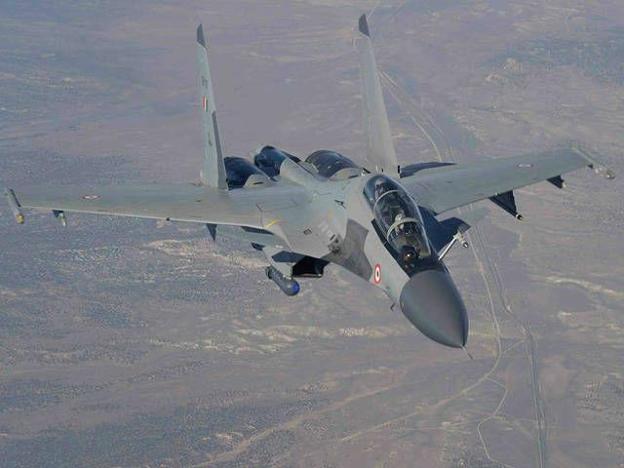


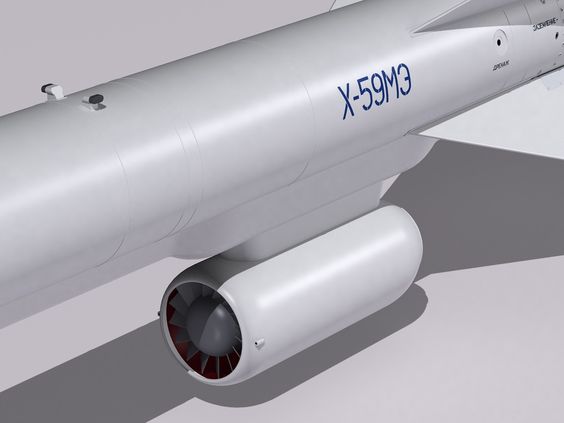







 Aster 30 interceptor – Image @mbda-systems.com
Aster 30 interceptor – Image @mbda-systems.com Image @eurosam.com
Image @eurosam.com
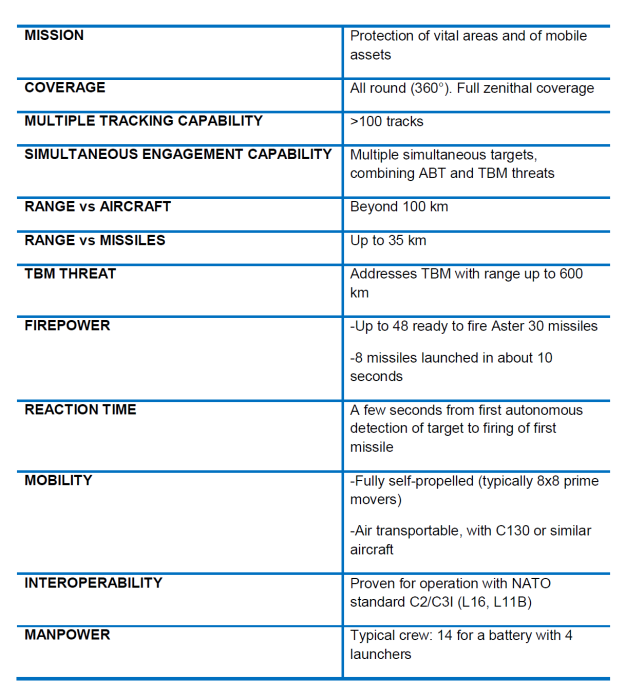



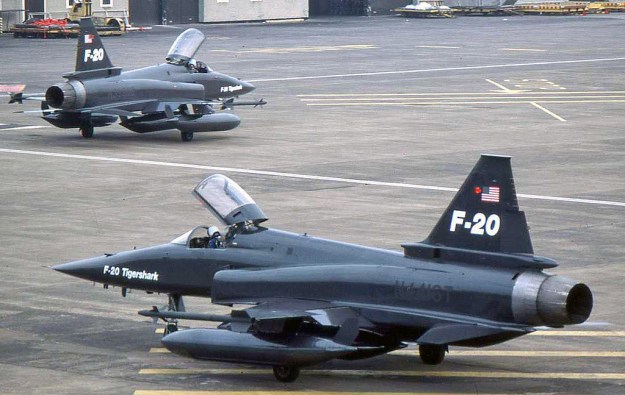









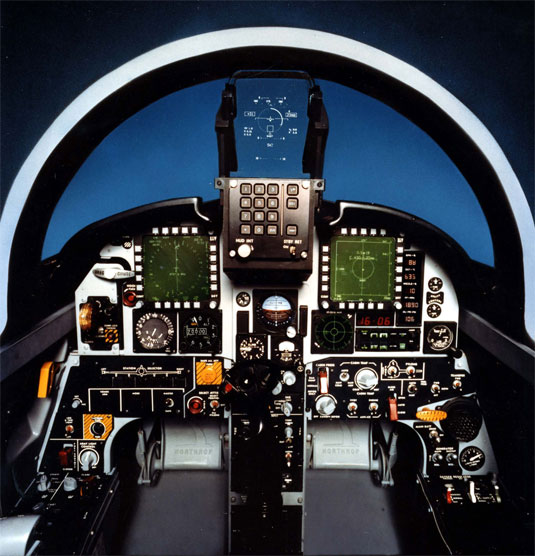
 Image @ordtech-industries.com
Image @ordtech-industries.com










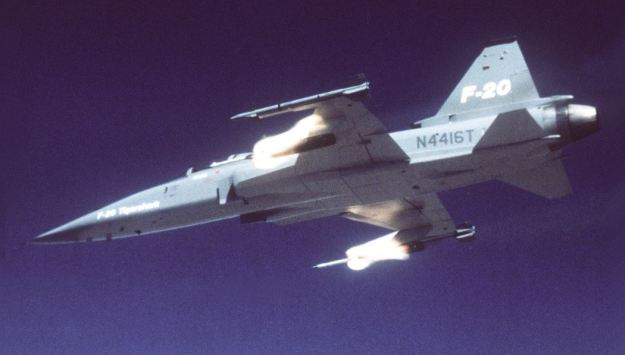










 vitalykuzmin.net
vitalykuzmin.net
 vitalykuzmin.net
vitalykuzmin.net vitalykuzmin.net
vitalykuzmin.net Image @burevestnik.com
Image @burevestnik.com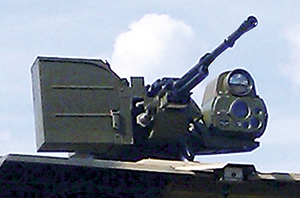 Image @burevestnik.com
Image @burevestnik.com Image @burevestnik.com
Image @burevestnik.com Image @nevskii-bastion.ru
Image @nevskii-bastion.ru Image @nevskii-bastion.ru
Image @nevskii-bastion.ru

 Image @nevskii-bastion.ru
Image @nevskii-bastion.ru Image @nevskii-bastion.ru
Image @nevskii-bastion.ru Image @nevskii-bastion.ru
Image @nevskii-bastion.ru




 HMAS Parramatta (FFH 154) – Image @tinypic.com
HMAS Parramatta (FFH 154) – Image @tinypic.com HMAS Warramunga (FFH 152)
HMAS Warramunga (FFH 152)  HMAS Anzac (FFH 150)
HMAS Anzac (FFH 150) HMAS Perth (FFH 157) Bridge (See video at bottom)
HMAS Perth (FFH 157) Bridge (See video at bottom) HMAS Anzac – Image @navaltoday.com
HMAS Anzac – Image @navaltoday.com


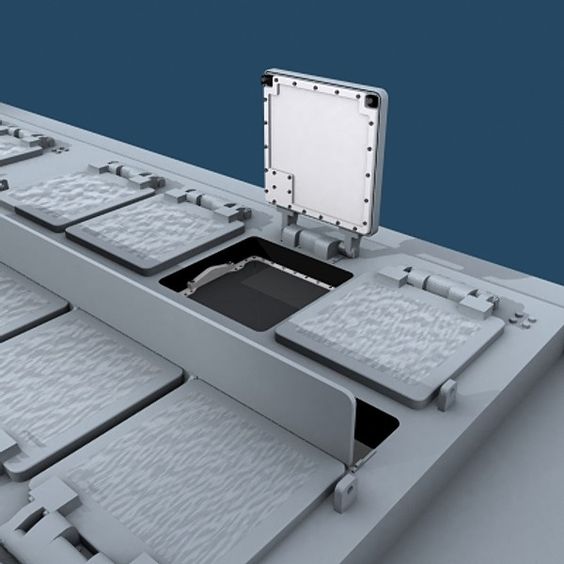

 “quad pack” launcher (Mk-41 VLS)
“quad pack” launcher (Mk-41 VLS)


 Image @cea.com.au
Image @cea.com.au Image @seaforces.org
Image @seaforces.org

 Image @militaryedge.org
Image @militaryedge.org
 HMAS PERTH [III]’s 5-inch/54 cal. Mk45 Mod 2 rapid fire gun turret – Photo Kookaburra.
HMAS PERTH [III]’s 5-inch/54 cal. Mk45 Mod 2 rapid fire gun turret – Photo Kookaburra. 

 HMAS Perth (FFH 157)
HMAS Perth (FFH 157) Image @militaryaerospace.com
Image @militaryaerospace.com
 The BAE Systems Mark 36 Super Rapid Bloom Offboard Countermeasures Chaff and Decoy Launching System (abbreviated as SRBOC or “Super-arboc”) is a short-range mortar that launches chaff or infrared decoys from naval vessels to foil anti-ship missiles. Each launcher has three tubes set at a 45-degree angle, and three tubes set at a 60 degree angle, providing an effective spread of decoys and countermeasures to defeat radio frequency emitting missiles. The SRBOC can also be fitted with the TORCH infrared “flare” decoy system. A typical ship’s load is 20 to 35 rounds per launcher.
The BAE Systems Mark 36 Super Rapid Bloom Offboard Countermeasures Chaff and Decoy Launching System (abbreviated as SRBOC or “Super-arboc”) is a short-range mortar that launches chaff or infrared decoys from naval vessels to foil anti-ship missiles. Each launcher has three tubes set at a 45-degree angle, and three tubes set at a 60 degree angle, providing an effective spread of decoys and countermeasures to defeat radio frequency emitting missiles. The SRBOC can also be fitted with the TORCH infrared “flare” decoy system. A typical ship’s load is 20 to 35 rounds per launcher.

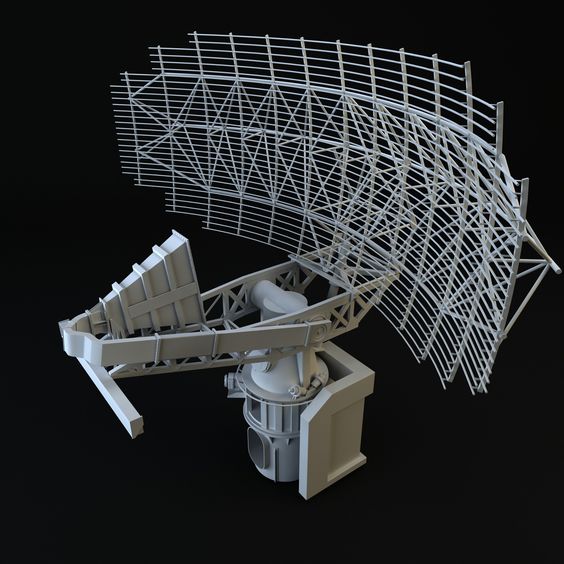
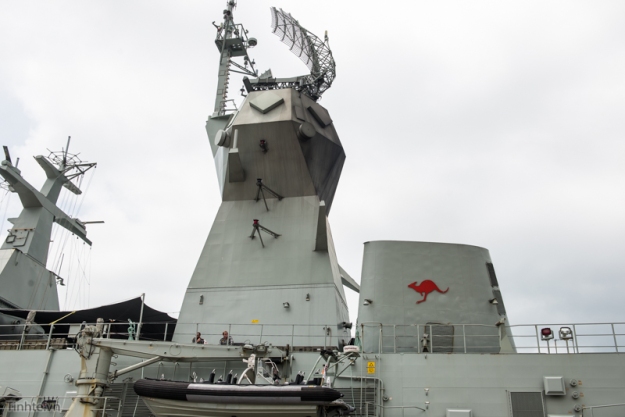


 Image @kelvinhughes.com
Image @kelvinhughes.com SharpEye Transceiver – Image @kelvinhughes.com
SharpEye Transceiver – Image @kelvinhughes.com Naval Tactical Radar Display – Image @kelvinhughes.com
Naval Tactical Radar Display – Image @kelvinhughes.com Keyboard and Trackpad – Image @kelvinhughes.com
Keyboard and Trackpad – Image @kelvinhughes.com
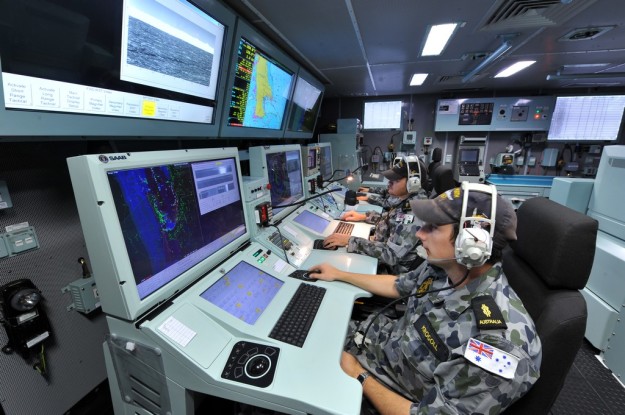 Image @saab.com
Image @saab.com Image @saab.com
Image @saab.com
 The new sensors installed after the upgrade to form the integrated sensors mast. Note the exhaust funnel just behind the mast. Source
The new sensors installed after the upgrade to form the integrated sensors mast. Note the exhaust funnel just behind the mast. Source 
 Image @tinypic.com
Image @tinypic.com

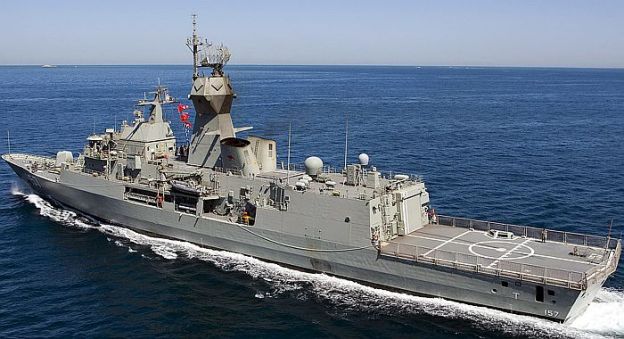
 Image @airplane-pictures.net
Image @airplane-pictures.net









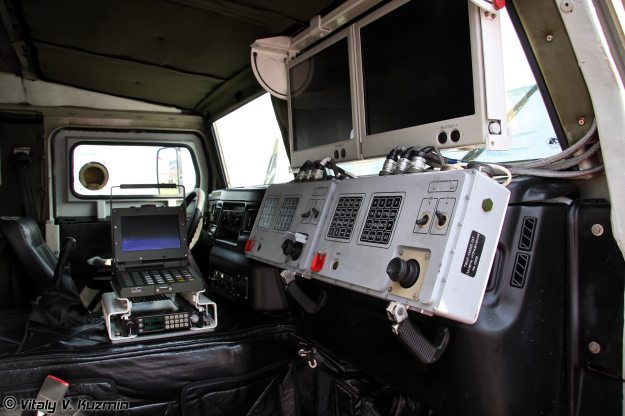












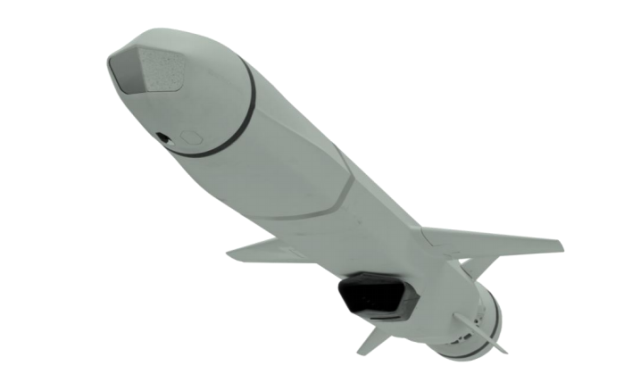


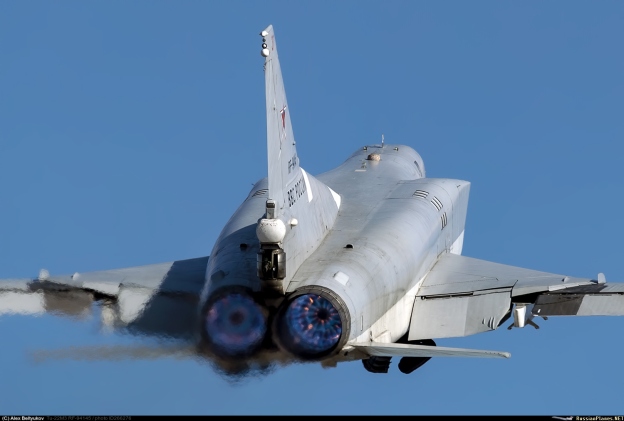
 Image: tupolev.ru
Image: tupolev.ru The Tu-22M3M is a modernized version of the Tu-22M3. There’s only one prototype yet, which undertakes tests now, with frame number RF-94145, made last year (2012). Image:
The Tu-22M3M is a modernized version of the Tu-22M3. There’s only one prototype yet, which undertakes tests now, with frame number RF-94145, made last year (2012). Image: 
 Hump on the nose – Интернет-газета «Реальное время»
Hump on the nose – Интернет-газета «Реальное время» Rear gun removed – UFO- END YouTube
Rear gun removed – UFO- END YouTube
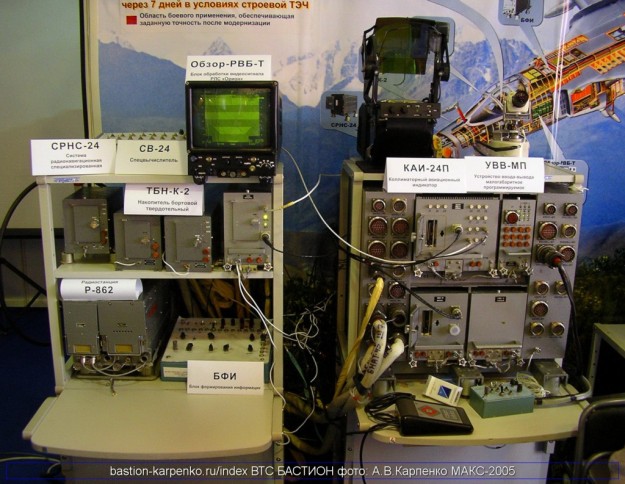



 Tu-22M3 cockpit – Image: airplane-pictures.net
Tu-22M3 cockpit – Image: airplane-pictures.net













 Image: bemil.chosun.com
Image: bemil.chosun.com

 Tu-22M3 bomb bay – Image: theaviationist.com
Tu-22M3 bomb bay – Image: theaviationist.com Image: charly015.blogspot.com
Image: charly015.blogspot.com Image: charly015.blogspot.com
Image: charly015.blogspot.com Image: charly015.blogspot.com
Image: charly015.blogspot.com Image: ausairpower.net
Image: ausairpower.net

 Image: ausairpower.net
Image: ausairpower.net

 PKS-4KM rear radar – Image: wikimedia.org
PKS-4KM rear radar – Image: wikimedia.org



 Image: ausairpower.net
Image: ausairpower.net Image: ausairpower.net
Image: ausairpower.net